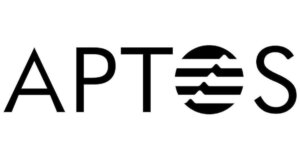 BTI Report: Evidence of wash trading on Binance
BTI Report: Evidence of wash trading on Binance BTI Report: Evidence of wash trading on Binance

Cover art/illustration via CryptoSlate. Image includes combined content which may include AI-generated content.
The most recent market surveillance report from the Blockchain Transparency Institute claims that Binance, the world’s biggest cryptocurrency exchange by trading volume, shows signs of wash trading.
Cryptocurrency trading volume is fabricated
The Blockchain Transparency Institute (BTI) is a group of blockchain data researches who aim to bring more transparency to the cryptocurrency market. The Institute spent the last four months working on a new algorithm that is designed to identify individual accounts on cryptocurrency exchanges that are involved in wash trading, a process where traders buy and sell securities for the express purpose of feeding misleading information to the market.
After several months of research, BTI discovered over 10 percent of trading on Binance is wash trading. Most of the wash trading was observed on 30 trading pairs on the exchange, with some pairs showing signs of up to 75 percent wash trading volume. Nonetheless, the top volume pairs on the platform, such as Bitcoin and Ethereum, were said to have 85 to 95 percent legitimate volume.
Binance is no longer considered a “verified exchange” despite being relatively clean when compared to other platforms. According to the Blockchain Transparency Institute:
“About 88 to 92 percent of daily trading volume is fabricated depending on the day. Bitcoin’s daily trading volume is about 92 percent fabricated. [Among] the top 40 largest exchanges with actual volume, Bitcoin’s volume is about 65 percent fabricated. Almost all of this fabricated volume comes from OKEx, Bibox, HitBTC, and Huobi.”
A variety of strategies have been used to deceive investors, including buying followers and likes on social media platforms, fake order books, mirror wash trading with other exchanges, and the implementation of bots that prevent the price of those cryptocurrencies from being affected while the process takes place. As a result, the fraudulent activity has become an industry with professional individuals offering their services on the black market.
In a blog post, Livio Weng, CEO of Huobi Global, commented:
“The issue of fake trading volumes is a real one in the industry and people have a right to know that the numbers provided by exchanges are legitimate. We think there should be no exceptions and we see something like DATA as a natural next step as our industry grows in both maturity and mainstream acceptance.”
Alon Karniel, COO of Algoz, explained in a recent interview that cryptocurrency exchanges benefit the most from this type of deceitful activity since it makes them more appealing to upcoming startups which are willing to pay hefty listing fees. Indeed, BTI revealed that the listing costs from just the wash trading exchanges totaled over 150 BTC.

Deceptive practices in the cryptocurrency market are likely to continue as many of the players involved profit from them. Even though they raise questions about the industry as a whole, Travis Kling, CIO of Ikigai Asset Management, believes that some exchanges may rely on these types of practices to keep their businesses afloat.
This represents a setback for the adoption of technology in the United States, especially from a regulatory standpoint. U.S. Securities Exchange Commission Chairman Jay Clayton commented in a recent interview with CNBC that there is still a lot of work to be done for regulators and lawmakers to create the framework and guidelines needed in the cryptocurrency markets.
“We have sophisticated rules and surveillance to ensure that people are not manipulating the stock market. Those cryptocurrency markets by and large do not have that. And we’re working hard to see if we can get there. But I’m not just going to flip a switch and say ‘this is just like stocks and bonds.’”
SEC Chairman Jay Clayton on #Crypto:
"We have sophisticated rules & surveillance to ensure that people are not manipulating the stock market. Those cryptocurrency markets by and large do not have that." pic.twitter.com/1iGryAiSob
— Squawk Box (@SquawkCNBC) June 6, 2019
Although there are exchanges that are working with regulators to remain compliant and maintain almost 100 percent accuracy in their reported volumes—such as Kraken, Coinbase, and Bitso—there are others that enjoy little to no regulatory oversight which allow them commit ‘irregular’ activities.
Larry Cermak, director of research at The Block, highlighted that the BitMEX index can be easily manipulated to liquidate thousands of transactions on the platform.
What do you think can be done with people manipulating BitMEX’s index to liquidate millions? Unless BitMEX introduces better measures, this will continue happening and people will continue getting REKT
— Larry Cermak (@lawmaster) June 6, 2019
In addition, a Twitter user under the pseudonym Crypto Man, explained an ongoing scheme in BitMEX that allows bad actors to get on the leaderboard of the exchange and open paid groups claiming that they have made hundreds of times their trading balance in a short period of time. In reality, these bad actors are gaming the leaderboard system to deceive traders.
3) Bitmex support changes the name. Escrow is released. Scammer now promotes himself being on the leaderboard and baits his followers. Unsuspecting noobs and even accounts with many followers fall prey for this and believe it to be true.
— CryptoEH (@alts_crypto) May 24, 2019
It remains to be seen whether these practices will be completely erased from the cryptocurrency market, which will allow a better implementation of the technology. Until that happens, investors will be exposed to wide range of risks including the recent flash crash in Poloniex that caused total losses of 1,800 BTC to the exchange’s users.
On May 26, a sudden, severe price crash in the CLAM market caused a number of margin loans to default, resulting in a roughly 1800 BTC loss in the Poloniex BTC margin lending pool for non-US customers.
— Poloniex Exchange (@Poloniex) June 6, 2019




 CoinGlass
CoinGlass 


 Farside Investors
Farside Investors 






























































































